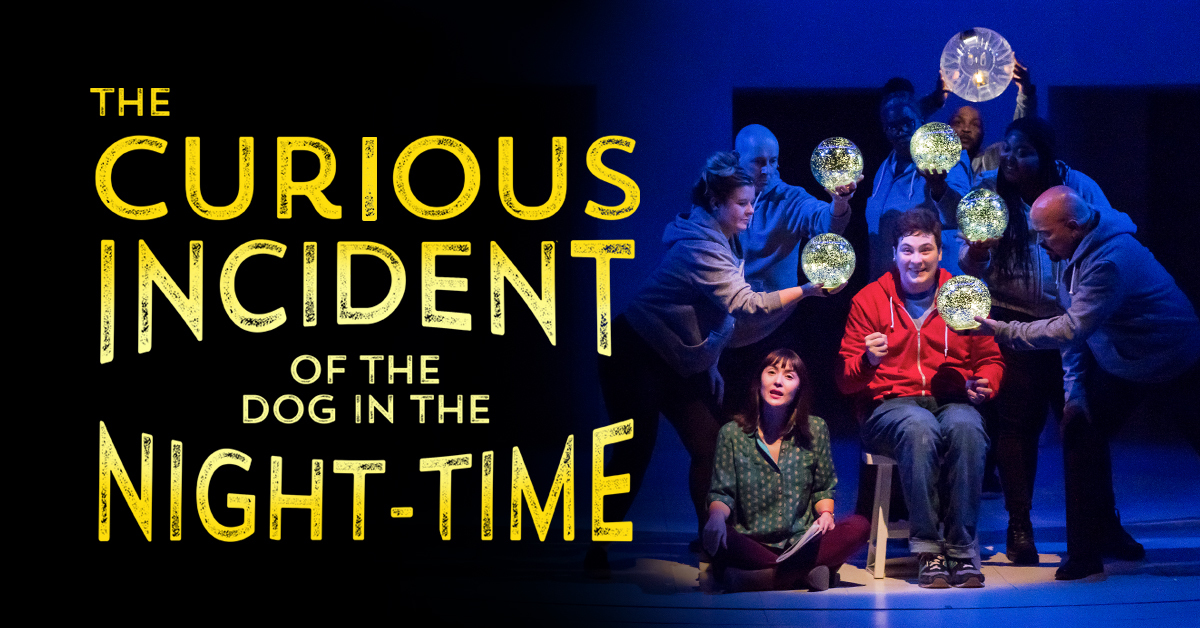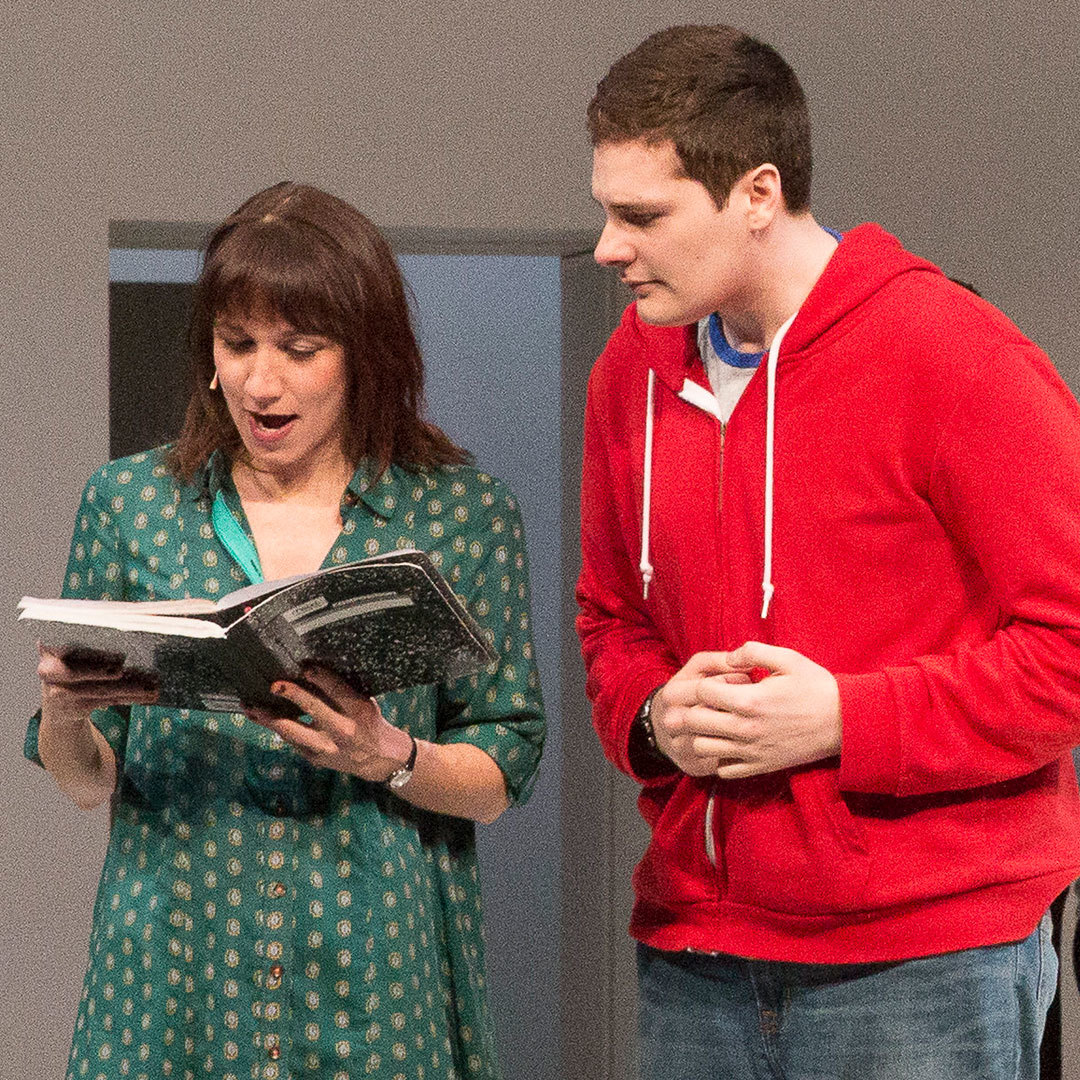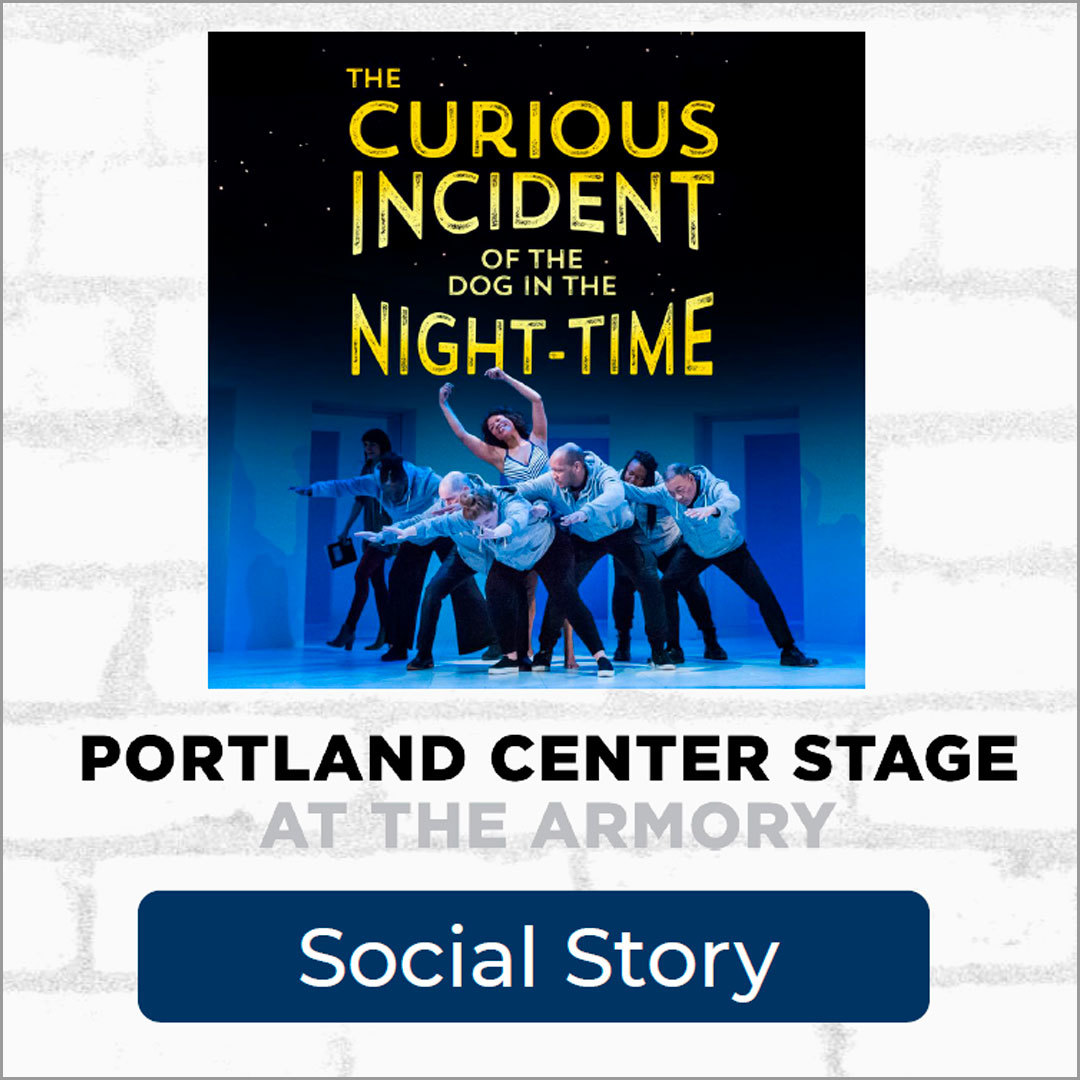Resource Guide
An Interview with Jamie Sanders
Actor Jamie Sanders, who plays Curious Incident’s protagonist Christopher, reprises the role after collaborating with Portland Center Stage Artistic Director Marissa Wolf when she directed the play at Kansas City Repertory Theatre in 2018. Prior to his debut at KCRep, dramaturgs Mary Allison Joseph and Bethany Sulecki sat down with Jamie to discuss Christopher’s journey and why this play resonates with him personally. We’re pleased to share excerpts of that conversation with Portland audiences as we welcome Jamie back to Christopher’s world.
Learn MorePlot Synopsis
Investigate the plot summary for The Curious Incident of the Dog in the Night-Time. Note: this crime scene contains spoilers!
Learn MoreSensory-Friendly Performance
We are pleased to offer a special sensory-friendly performance for The Curious Incident of the Dog in the Night-Time, designed to be enjoyable by all, but with some changes for those who are neurodivergent or have sensitivities. We will alter the theater environment to provide a safe, friendly, and comfortable zone, where patrons are invited to make sounds, enter and exit as needed, and enjoy the show with their family and community.
Learn MoreSocial Story for Sensory-Friendly Performance
A social story is a visual resource designed to help prepare visitors for an experience at the theater and to help them become familiar with the surroundings.
Learn MoreBehind the Curtain: Spotlight on Jamie & Troy
Literary Manager Kamilah Bush sat down with actor Jamie Sanders and autism consultant — and actor in his own right — Troy Sawyer.
Learn MoreReading List
Calling all readers! Multnomah County Library put together a reading list inspired by our production of The Curious Incident of the Dog in the Night-Time. Discover murder mysteries and heartwarming tales, featuring neurodivergent characters and exploring themes related to the play.
Learn MoreACTIVITY I: LET'S GO BACK TO THE DRAWING BOARD!
"The word metaphor means carrying something from one place to another and it is when you describe something by using a word for something that it isn't. This means that the word metaphor is a metaphor." –Christopher
Prep: On small pieces of paper, write down a metaphor for each student in the class. Reflect these same metaphors onto a whiteboard or a handout for each student.
Materials: a whiteboard, blank paper, post-it notes, markers
Step 1: As a class, have students shout out common metaphors (just to warm up!).
Step 2: Pass out each piece of paper with a written metaphor to every student (at this point do not tell them what they will be doing with the metaphor, and ask that they keep it to themselves).
Step 3: Pass out blank paper and markers to each student.
Step 4: Each student will have up to 10 minutes to draw out their metaphor to the best of their ability. No words allowed in the drawing!
Step 5: Have each student hang up their drawing somewhere in the class.
Step 6: Pass out post-it notes to each student (each should have as many as there are people in the class).
Step 7: Give everyone 5-10 minutes to go around the room to examine everyone’s artwork and write down on their post-it note what metaphor they think each piece is (advise everyone to use the whiteboard/handout with all the metaphors to try and solve this mystery).
Step 8: Have every student stand next to their drawing and share what metaphor most people thought they had, and then what they actually had.
Reflection Questions:
1. Were you familiar with the metaphor you received? If so, when and where have you heard it being used? If not, were you surprised to find out what it meant?
2. What was your strategy for trying to draw your metaphor? Did you try to draw it literally or figuratively? Why did you choose to draw it this way?
3. Why do we use metaphors in everyday life?
4. Do you think that the use of metaphors makes thoughts more universal or harder to understand?
ACTIVITY II: WHODUNIT?
Step 1: Have students pair up in groups of 3-4.
Step 2: Ask all groups to think of a mystery they would like to investigate (ex: Who took the last pair of scissors in class? Where did the missing laptop go? Is there a real case in your town that has never been solved?). Each group will focus on one mystery to solve together.
Step 3: Give students 10-15 minutes to agree on their mystery and to compile a chronological list of how they would investigate this case. (Prompts: Would you question people you think are involved? Who would those people be? Would you look for clues? Where would you look?).
Step 4: Allow 5-10 minutes for all groups to share out the mystery they chose and their investigation plans.
Reflection Questions:
1. What made you interested in the mystery you chose?
2. How did everyone in your group agree on the first few steps of your investigation plan? What other strategies did your group members present?
3. How did working in a group make this process easier or harder?
ACTIVITY III: WHAT'S ON YOUR MIND?
Materials: magazines, blank paper, glue sticks, markers, pens
This script is not told as a conventional stage narrative. As the playwright tries to let us into Christopher’s mind, it is more comparable to a visual and aural collage. He tells a story with a beginning, middle, and end, but is filled with his impressions, sometimes with hyper-attention to details. Have students create a collage of their own day, using images, written notes and phrases, and impressions expressed through pictures.
Glossary
A Levels: The advanced level exams needed to leave school in the United Kingdom. They are given in separate areas of study. In Curious Incident, Christopher is taking the Maths A Levels. They are part of the General Certificate of Education, are national examinations and, like our College Boards or ACT, they are required for entrance into university.
Aloo Gobi Sag: An Indian dish consisting of cauliflower and potatoes, seasoned with garam masala. Indian food, including great restaurants, take-out, and packaged food, is very popular in England.
A to Z: A pocket-sized map of London.
Battenberg Cake: A sponge cake constructed to create a checkerboard pattern of pink and yellow layers when cut.
Bed-Sit: A one-room apartment that we would call a studio.
Biscuit: A cookie.
British Rail: The English train system, which is much more extensive and popular than Amtrak.
Cashpoint Card: A debit card.
Invigilator: An exam proctor.
Lemon Squash: A carbonated drink made from a fruit syrup, in this case lemon.
Lose My Rag: To get angry or lose one’s temper.
Marks & Spencer: A popular chain of department stores. In slang, it is often called “Marks & Sparks.”
Plonker: A fool.
Tube: The London subway system.
Trainers: Sneakers.
Thank you to our Education Program Sponsors!
Portland Center Stage is committed to identifying & interrupting instances of racism & all forms of oppression, through the principles of inclusion, diversity, equity, & accessibility (IDEA).














